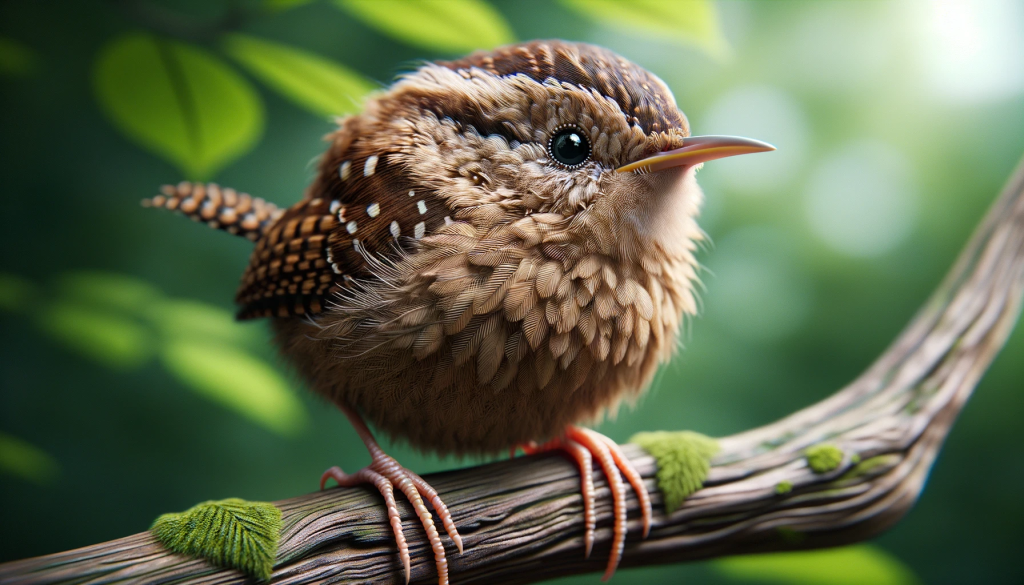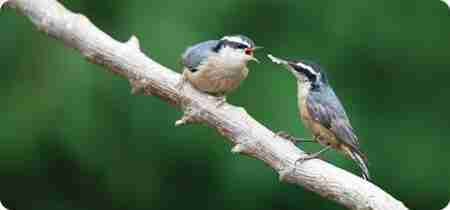[et_pb_section fb_built=”1″ _builder_version=”4.16″ global_colors_info=”{}”][et_pb_row _builder_version=”4.16″ background_size=”initial” background_position=”top_left” background_repeat=”repeat” global_colors_info=”{}”][et_pb_column type=”4_4″ _builder_version=”4.16″ custom_padding=”|||” global_colors_info=”{}” custom_padding__hover=”|||”][pac_divi_table_of_contents included_headings=”off|on|on|off|off|off” level_markers_1=”whole” _builder_version=”4.22.1″ _module_preset=”default” hover_enabled=”0″ global_colors_info=”{}” default_state=”closed” sticky_enabled=”0″][/pac_divi_table_of_contents][et_pb_text _builder_version=”4.16″ background_size=”initial” background_position=”top_left” background_repeat=”repeat” global_colors_info=”{}”]You’re about to embark on an intriguing journey into the world of ornithology, specifically focusing on the recent shifts in bird migratory patterns. Renowned researchers from the Global Avian Migration Institute have made a fascinating discovery – certain avian species are reaching their destinations much earlier or later than usual. Now, two camps are emerging with potential explanations: environmentalists who cite climate change, and those who think this is a natural phenomenon. In this engaging article, you’ll be presented with the key data, expert viewpoints and enter into the discussion about the potential impact such changes could have on ecosystems. So, let’s set flight into the heart of this captivating subject. 
Understanding Bird Migratory Patterns
Bird migration is an essential part of the avian life cycle and is a display of nature’s incredible ability to adapt to changing seasons.
The science behind bird migration
The migration of birds is a phenomenon influenced by various environmental and genetic factors that prompt birds to move between habitats at particular times each year. It’s their survival mechanism, established over thousands of years, that allows them to exploit the best seasonal conditions for breeding and feeding worldwide. Through this process, birds can optimize their energy consumption, reduce risks of predation, and access more abundant food sources.
Factors influencing migration patterns
Several factors can dictate the migratory behavior of birds. The primary reasons are food availability, nesting locations, and climatic conditions. Birds often fly to regions where the climate suits their physiological needs and where food and nesting supplies are abundant. Moreover, the age, health, and reproductive status of birds can also play a significant role in their migration patterns.
Common migratory routes and timings
Bird migratory routes, referred to as ‘flyways,’ are often traditional paths that birds have been using for thousands of years. These routes usually connect high latitude breeding areas in the summer to lower latitude non-breeding habitats in the winter and vice versa. Each bird species has a specific migration timing, but generally, most migrations occur during the spring and fall seasons.
Recent Shifts in Migratory Behavior
Interesting and concerning shifts have recently been observed in the migratory behavior of birds.
Overview of observed changes
Some bird species are now arriving at their destinations earlier or later than usual by weeks, a phenomenon that has never been noticed before. Certain species are choosing new routes, with some opting to prudently shorten their journeys, while others are extending their routes.
Specific species affected
This change seems indiscriminate, affecting both common and endangered species. From Swallows to Red Kites, birds across the spectrum have shown shifts in their migratory behavior.
Synopsis of Global Avian Migration Institute’s findings
The Global Avian Migration Institute’s extensive research highlights the fact that this shift in timing could potentially cause a ripple effect on ecosystems. Animals and plants that rely on certain bird species for pollination, seed dispersal, or as part of their food chain could be greatly affected by this strategy shift.
Climate Change: A Potential Explanation
The sudden changes in bird behavior have thrown up several theories, with climate change becoming the leading suspect.
How climate change influences bird behavior
Climate change could be altering the bird’s migratory behavior by changing their habitats and food availability. Warmer temperatures trigger an earlier spring, causing birds to kickstart their migratory process sooner. On the other hand, increasing storms and unpredictable weather can potentially delay migration.
Real-world examples of climate change impacting migration
Arctic terns and other bird species relying on polar habitats have displayed earlier departures and later returns. This can likely be linked to melting polar ice caps, a direct result of climate change. Moreover, birds that rely on coastal and marine habitats are at risk as warmer oceans cause a downfall in their food sources.
Scientists’ perspective on climate as a cause
Many scientists believe that climate change is the primary driving force behind the shift in migration patterns. However, they also acknowledge that further research is needed to understand the full range of impacts of climate change on bird behavior.
Natural Phenomenon: A Contrasting Perspective
However, not all agree with the climate change theory, some propose that natural phenomena might be causing these shifts.
The role of natural phenomena in bird migration
Historically, natural events such as volcanic eruptions, wildfires, or even astronomical shifts have influenced bird migratory patterns. These changes have caused temporary re-routing, and in some cases, they have permanently altered routes.
Possible explanations for shifts in migration patterns
Some scientists argue that the current changes could be part of an extensive natural cycle that we are just beginning to understand. They suggest that variables such as shifts in Earth’s magnetic field or changes in solar radiation could potentially be driving these changes.
Where scientific consensus lies
While there is no consensus among scientists on the primary cause of this change, climate change remains the most widely accepted theory. However, the role of natural phenomena cannot be entirely ruled out, leading to a heated debate within the scientific community. 
The Debate: Climate Change vs Natural Phenomenon
The constant wrangle between ‘climate change’ as a cause and ‘natural phenomena’ continues to shape scientific research directions and public opinion.
Exploring different viewpoints
Climate change believers argue that increasing temperatures and shifting climates are altering habitats, thereby directly influencing bird migratory patterns. On the other hand, proponents of natural phenomena suggest that migratory changes could be part of a natural cycle, driven by a mix of environmental, astronomical, and geophysical factors.
Key arguments for each side
The global temperature increase fits well with observed earlier arrivals of birds in the spring, supporting the climate change argument. In contrast, documenting a full natural cycle is more challenging and does not necessarily explain all the observed changes. This makes the argument of natural phenomena weaker but not negligible.
Implications of the debate on future research
The ongoing debate is influencing the direction of future bird migration research. While both schools of thought don’t necessarily compete, they do indirectly boost a holistic approach. This dichotomy encourages researchers to look into both human-induced and natural environmental changes while studying bird migration patterns.
Impact on Ecosystems
Regardless of the cause, shifts in migratory patterns could potentially disrupt ecosystems worldwide.
Potential effects of shifted migration patterns on bird populations
Drastic shifts in migration can affect bird populations since they may arrive at destinations when conditions are not prime or when their food sources have not yet appeared. This can lead to reduces survival and reproductive success and in turn, population declines.
Ecosystem-wide impacts
Changes in bird migration can have cascading effects on ecosystems. Birds are crucial for pest control, seed dispersal, and nutrient cycling. They also serve as prey for several predator species. Thus, changes in bird behavior can indirectly affect other elements of biodiversity.
Examples of changes already observed
In areas where birds are arriving earlier, there have been reports of disruptions to traditional food chains, with potential knock-on effects on other species. Moreover, changes in plant pollination and seed dispersal have been noticed, leading to a shift in vegetation patterns.
Adaptation of Birds to Changing Conditions
Birds have shown remarkable resilience and adaptability throughout their evolutionary history, and the current shifts could be a part of that long journey.
Understanding adaptation in bird species
Birds, like any other organisms, adapt to survive. Over time, they can significantly vary their behavior, body structure, or physiology to fit their environment. These adjustments can be collectively termed as adaptation.
Research on bird adaptation to climate shifts
In response to the changing climate, birds might adapt by altering their morphology, like growing longer wings for more extended flights. Some could modify the timing of their migration, while others might switch habitats altogether. Researchers around the world are persistently studying these potential adaptations.
Implications for species survival
While some bird species might adapt successfully, others might fail to cope with the fast-paced change, making them more susceptible to extinction. This highlights the dire need for comprehensive research and conservation efforts.
Broader Implications for Biodiversity
The shift in bird migratory patterns can significantly impact global biodiversity.
Impact on predation and food chains
Changes in bird behavior can disrupt predatory hierarchies and food chains. Predator species that rely on migratory birds might struggle to find food. Simultaneously, pests that birds control might flourish, causing damage to other species.
Change in interspecies relationships
Birds often compete for food and habitats with other species. A shift in migration time could alter these competitions, affecting the broader ecological balance.
Effect on biodiversity and conservation efforts
Changes in bird behavior could lead to loss or gain of specific species in certain areas, affecting local biodiversity. Conservation efforts need to recognize and address these potential changes for any success.
Future Predictions and Research Direction
While it’s difficult to predict exact future migratory changes, given the current trends, researchers are working to forecast possible shifts.
Anticipated migratory changes in the future
With the ongoing climate change, scientists predict even more changes in bird migration. Birds might start their journey earlier, change their routes, or even choose not to migrate in the future — an event already happening for some species.
Effect on avian studies and conservation strategies
Future research will undoubtedly focus more on the impact of climate change and other global changes on bird migration. The findings would significantly shape our conservation strategies, pushing for more climate-resilient plans.
Potential areas of research for understanding the phenomenon
The mystery behind this shift needs unravelling, which calls for research on a wider array of topics. Scientists need to study the genetic and physiological aspects, look closer into the environmental and climatic factors, and analyze long-term historical data.
Community Action and Policy Recommendations
With the current changes, community action and comprehensive policies are critical to mitigate the impacts.
Role of local communities in mitigating impacts
Communities play a significant role in bird conservation. Creating bird-friendly habitats, arranging bird watching activities, or simply educating others about birds can significantly help mitigate impacts.
Policy implications and recommendations
Strong policy guidance is necessary to address these shifts. This entails better management of bird habitats, stricter laws against activities causing climate change, and more funding towards avian research.
Steps toward a climate-resilient future
Ultimately, moving towards a more sustainable and climate-resilient future is crucial. With potent community efforts and effective policies, we can significantly minimize the impacts of changing bird migratory patterns on ecosystems. 
[/et_pb_text][/et_pb_column][/et_pb_row][/et_pb_section]




